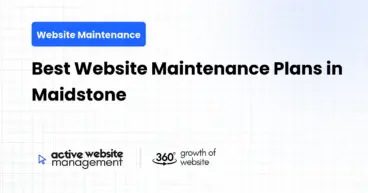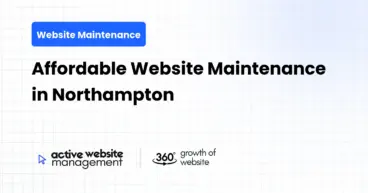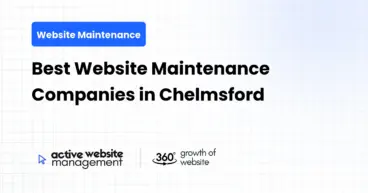January 4, 2025
6 min read
In today’s rapidly evolving digital world, maintaining a scalable eCommerce platform is crucial for businesses aiming for long-term success. Scalability ensures that your online store can handle increasing traffic, transaction volumes, and growing customer expectations without compromising performance or user experience. Below, we explore the best practices for keeping your eCommerce platform efficient, secure, and optimized for growth.
Why Scalability Matters in eCommerce
Scalability is the foundation of a successful eCommerce business. As your store grows, you’ll encounter higher traffic volumes, larger product catalogs, and more complex customer journeys. Without proper scalability, your platform risks:
- Slow load times that deter potential customers.
- Increased downtime during peak shopping periods.
- Loss of sales and revenue due to poor performance.
- Diminished customer satisfaction and retention.
A scalable platform ensures smooth operations, improves the overall user experience, and positions your business for sustainable growth.
Best Practices for Scalability
Selecting an eCommerce platform designed for scalability is your first step toward long-term success. Platforms like Shopify Plus, Magento, and WooCommerce are popular for their robust scalability features.
Key considerations when choosing a platform:
- Ability to handle high traffic volumes without performance degradation.
- Availability of plugins or extensions to enhance functionality.
- Built-in tools for SEO, marketing, and analytics.
- Support for multi-channel selling and integrations.
Don’t Just Maintain Your Website—
Grow It using Active Website Management! Don't Wait for Growth—Accelerate It with Active Website Management
Performance is a critical aspect of scalability. A slow-loading website can frustrate users and lead to high bounce rates, directly affecting your bottom line.
Tips to improve website performance:
- Use a Content Delivery Network (CDN): Distribute your website content across multiple servers globally to reduce latency.
- Compress images: Large images can slow down your website. Use tools like TinyPNG or JPEG Optimizer to compress images without losing quality.
- Minify CSS, JavaScript, and HTML: Remove unnecessary characters, spaces, and comments in your code to reduce file sizes.
- Implement lazy loading: Delay the loading of non-critical images and content until the user scrolls down the page.
- Use browser caching: Cache static resources to improve load times for returning visitors.
3. Ensure Mobile-Friendliness
With a significant portion of online shoppers using mobile devices, a mobile-optimized website is essential. Google’s mobile-first indexing also means that mobile usability impacts your search engine rankings.
Best practices for mobile optimization:
- Use a responsive design that adapts to different screen sizes.
- Ensure touch elements are appropriately sized and spaced.
- Optimize mobile navigation and search functionality.
For a detailed guide, read our article on Optimizing Magento for Mobile.
4. Leverage Cloud Hosting
Traditional hosting solutions may not provide the flexibility and scalability needed for a growing eCommerce store. Cloud hosting offers several advantages:
- Elastic scalability: Scale resources up or down based on demand.
- Improved performance: Cloud servers distribute the load across multiple data centers.
- High availability: Cloud hosting reduces the risk of downtime during peak traffic.
Popular cloud hosting providers include AWS, Google Cloud, and Microsoft Azure.
5. Regularly Update and Maintain the Platform
Outdated software and plugins can lead to performance issues and security vulnerabilities. Regular updates ensure that your platform stays secure and functions efficiently.
Key maintenance tasks:
- Update the core platform and plugins regularly.
- Remove unused or obsolete plugins to reduce bloat.
- Conduct regular backups and performance audits.
We specialize in keeping websites updated and secure through our Active Website Management service.
6. Enhance Security Measures
As your eCommerce store grows, it becomes a bigger target for cyber threats. Implementing robust security measures protects your business and customers.
Essential security practices:
- Use SSL certificates: Encrypt data between your website and users to protect sensitive information.
- Set up a web application firewall (WAF): Block malicious traffic and prevent attacks.For more on this topic, check out our guide on Website Security and Firewalls.
- Implement two-factor authentication (2FA): Add an extra layer of security for admin logins.
- Conduct regular security audits: Identify vulnerabilities and address them promptly.
7. Improve Internal Linking Structure
A well-structured internal linking strategy enhances user navigation and SEO. Internal links help distribute link equity across your site and improve crawlability.
Best practices for internal linking:
- Link to relevant pages within your content.
- Use descriptive anchor text for better context.
- Ensure that your most important pages are easily accessible.
8. Optimize for Search Engines
SEO is vital for driving organic traffic. Regular SEO optimization ensures that your site ranks well on search engines, even as it scales.
Key SEO practices:
- Conduct regular keyword research and update content accordingly.
- Optimize meta titles, descriptions, and headers.
- Use schema markup to enhance search visibility.
- Create high-quality, engaging content.
9. Invest in Content Marketing
Content is king when it comes to driving traffic and engaging customers. High-quality content builds trust, improves SEO, and helps convert visitors into buyers.
Content marketing strategies:
- Regularly publish blogs, guides, and how-to articles.
- Create product videos, infographics, and case studies.
- Engage with customers through email newsletters.
Continuously tracking key performance indicators (KPIs) helps you identify areas for improvement. Important metrics include:
- Page load time
- Bounce rate
- Conversion rate
- Cart abandonment rate
- Customer lifetime value (CLV)
Use tools like Google Analytics, Google Search Console, and heatmaps to gather insights.
Don't Wait for Growth—Accelerate It with
Active Website Management Don't Wait for Growth—Accelerate It with Active Website Management
Active Website Management: Your Partner in Scalability
Scaling an eCommerce platform requires consistent effort, expertise, and a proactive approach. At Active Website Management, we offer comprehensive services to keep your website updated, secure, and optimized for growth. Our services include:
- Proactive Security Enhancements
- Unlimited Website Updates
- SEO & Speed Optimization
- Content and Design Updates
- Regular Performance Reports
We work with businesses of all sizes, ensuring that their websites evolve continuously to meet market demands.
Conclusion
Maintaining a scalable eCommerce platform is not a one-time task—it’s an ongoing process that involves optimizing performance, ensuring security, and adapting to changing market needs. By following the best practices outlined above, you can position your eCommerce store for long-term success.
If you’re looking for a partner to help manage and grow your website, consider our Active Website Management service. Let us handle the technical complexities while you focus on growing your business.






